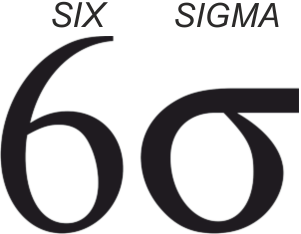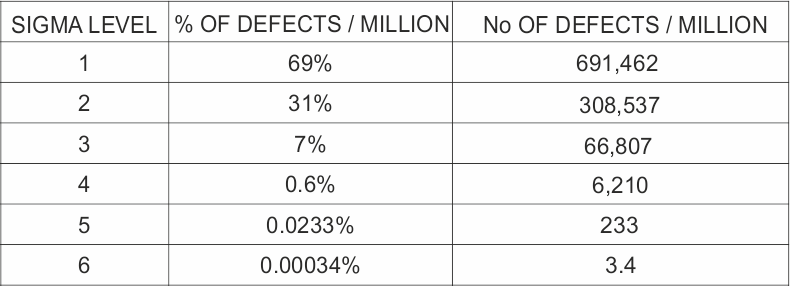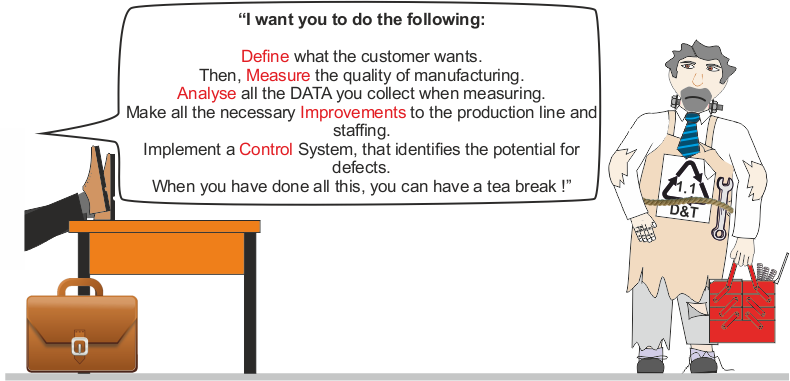V.Ryan © 2021

Six Sigma is closely related to Quality Control / Quality Assurance. It is a ‘system’ that aims to remove defects from the final product or service. It is a ‘philosophy’ largely driven by the analysis of DATA and Statistics .
Its name is derived from the Greek letter for ‘sigma’, which represents ‘standard deviation’, a method of statistical analysis. Six sigma has been applied to manufacturing and service industries successfully. Motorola, Texas Instruments and the Bank of America, claim its successful implementation, leading to overall efficiency and quality improvements.
A company that follows the six sigma philosophy, quantifies its effectives in eliminating defects with a sigma level. A company claiming a 6 sigma level (very high level), detects only 3 to 4 defects out of a million. This is a very high standard. It is more usual for companies to claim a 3 or 4 sigma level, detecting 70 to 300 defects per million checked.

Measure
Analyse
Improve
Control
A six sigma defect is normally described as, ‘one that falls outside the customers specification’. Therefore, six sigma methodology starts with the customer / client and their specification. The intention is to ‘Define’ the customers / clients exact requirements and expectations and not to deviate away from them.
First, Identify the quality indicators of the product being manufactured or the service being delivered. E.G. a company creates an accurate system of ‘measuring’ the quality of manufacture, at critical control points, as the product progresses along the production line. This includes the final quality inspection, before the product is dispatched to the customer / client.
Data collected during quality control checks is 'analysed'. This process aims to identify when, where and how defects occur. The belief is that strict analysis of DATA, will help to eliminate the occurrence of defects.
Linked very closely to the notion of ‘Continuous Improvement (CI)’. The aim is to eliminate defects through 'improvements' in the production line, production technology, staff training and focussed research (e.g research into materials, with the aim of improving the quality of the final product). Quality issues that have been identified by the previous ‘phases, are acted on.
Implement and constantly update control systems, such as quality checks (sensors, computer intervention, visual checks), staff training and skill upgrading, ensuring that potential ‘flaws’ are detected, before they result in defects. Any deviation away from total quality, is detected and rectified. This is a continuous process.
